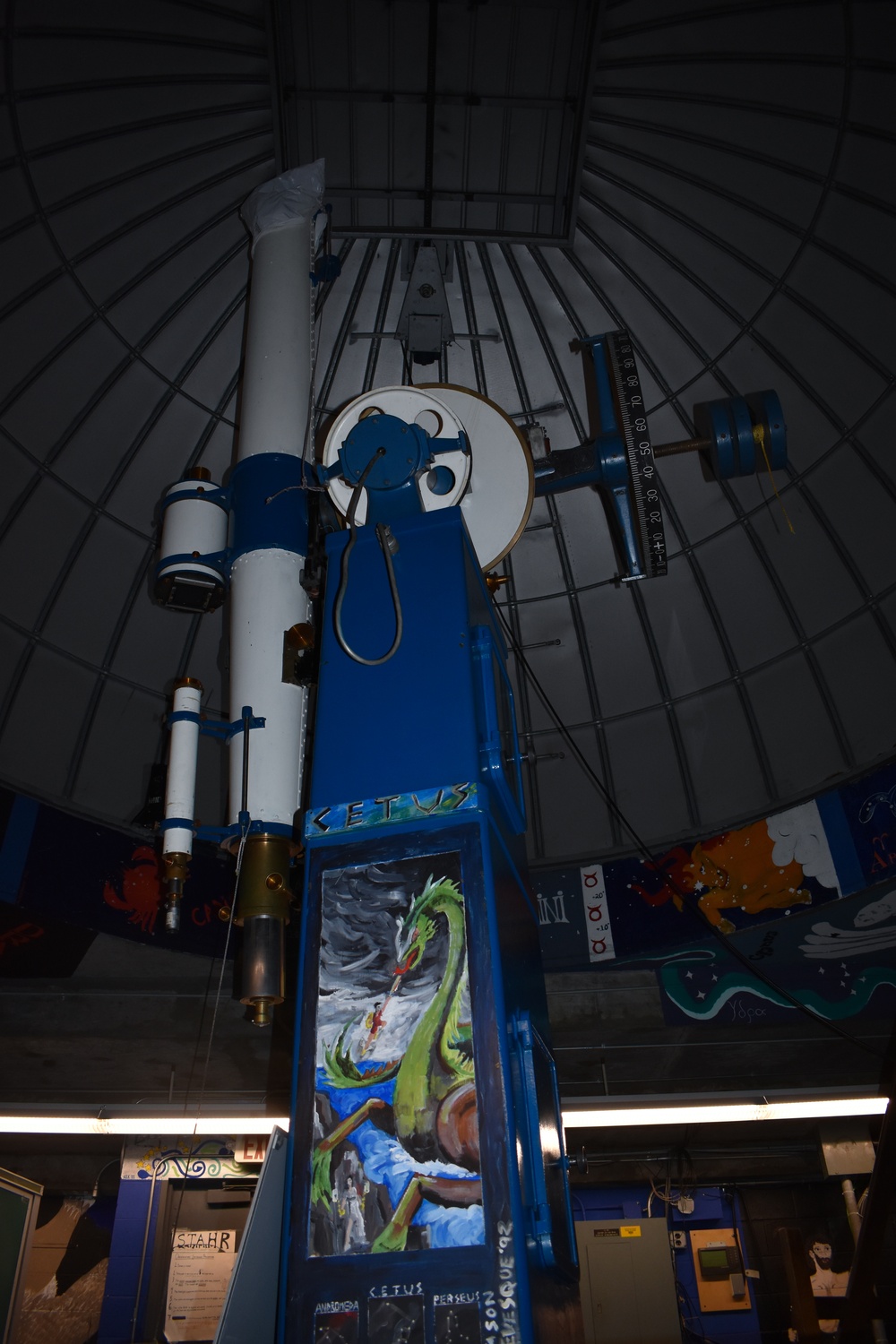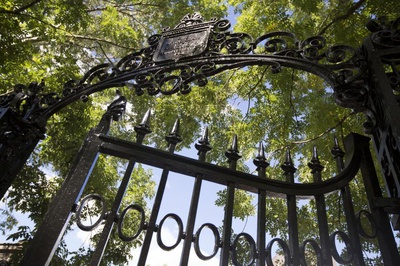
News
Harvard Researchers Develop AI-Driven Framework To Study Social Interactions, A Step Forward for Autism Research

News
Harvard Innovation Labs Announces 25 President’s Innovation Challenge Finalists

News
Graduate Student Council To Vote on Meeting Attendance Policy

News
Pop Hits and Politics: At Yardfest, Students Dance to Bedingfield and a Student Band Condemns Trump

News
Billionaire Investor Gerald Chan Under Scrutiny for Neglect of Historic Harvard Square Theater
‘Share the Universe’: Harvard Astronomy Club Holds Rare Comet Viewing

Dozens of students gathered at Harvard’s Loomis-Michael Observatory on Thursday and Friday for a rare viewing of Comet Tsuchinshan-ATLAS, a comet visible to the naked eye that researchers say is unlikely to return for at least 80,000 years.
At last week’s open houses, organized by Student Astronomers at Harvard-Radcliffe, a mix of college and graduate students caught a glimpse of the comet using image-stabilizing binoculars funded by the Harvard Undergraduate Association and the Clay telescope — a reflecting telescope operated through a dome on the Science Center roof.
The comet was first spotted in 2023 by observers at the Tsuchinshan Observatory in China and an ATLAS telescope in South Africa. Thought to come from the Oort Cloud, a large shell of debris at the edge of the solar system, the comet traveled past the sun on Sept. 27 and came within approximately 44 million miles of Earth in October, where its brightness made it visible to the naked eye.
Attendees said they were excited to see the comet, which appeared as a bright central orb with a long tail.
“I didn’t expect to see the tail so well,” said Elizabeth Park, a graduate student in physics at the Harvard Graduate School of Arts and Sciences.
But for some hopeful viewers, the comet was not as clear — at Thursday’s open house, organizers initially had trouble locating the comet.
“The main struggle is the atmosphere,” STAHR board member Hannah M. Burrows ’26 said. “Because it’s so low and Boston is so warm and bright, you get a lot of turbulence in the atmosphere, so it kind of looks like the bottom of a pond or a river.”
STAHR President K. Casey Murray ’25 also pointed to the weather and light pollution.
“If there’s something interesting astronomical going on, but it’s cloudy, then we’re not going to get a really good view of whatever it is we want to look at,” Murray said. “Comets and other things are really tricky to see through light pollution.”
Still, Murray said he looks forward to holding open houses for future astronomical events.
“There’ll be a pair of eclipses, a total lunar eclipse, and a partial solar eclipse in March of 2025 that I’m already really excited about,” Murray said.
Some open house attendees said they were drawn to the event by the comet’s rarity. As a long-period comet, Tsuchinshan-ATLAS is not expected to return for 80,000 years, if at all.
“For me, it’s pretty special — the next time it visits us there may or may not be civilization,” neuroscience research fellow Binxu Wang said.
Murray said open viewings allow them to “share the universe” with Cambridge residents and Harvard affiliates, adding that “incredible resources” for undergraduates make the viewings possible.
“Astronomy is one of the most powerful experiences that you can have for making you feel part of something larger than yourself,” Murray said.
“When you’re looking through that telescope, you’re looking at something millions and millions of miles away and moving inconceivably fast,” he added. “You’re reminded just how small and precious everything on Earth is.”
Want to keep up with breaking news? Subscribe to our email newsletter.
From Our Advertisers

Over 300+ courses at prestigious colleges and universities in the US and UK are at your disposal.

Where you should have gotten your protein since 1998.

Serve as a proctor for Harvard Summer School (HSS) students, either in the Secondary School Program (SSP), General Program (GP), or Pre-College Program.

With an increasingly competitive Law School admissions process, it's important to understand what makes an applicant stand out.

Welcome to your one-stop gifting destination for men and women—it's like your neighborhood holiday shop, but way cooler.

HUSL seeks to create and empower a community of students who are seeking pathways into the Sports Business Industry.
